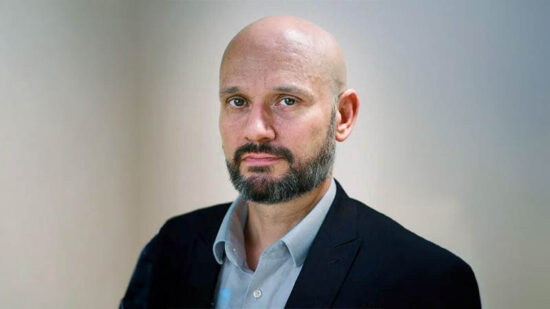Model Portfolio Services (MPS) have seen significant growth over the past few years. Assets in MPS have grown 28% over the past 12 months to a new high of £123bn. But with increasing problems around inconsistent implementation of MPS on platforms, could the dial start to swing back to unitised products?
Why have MPS been so popular? Ben Conway, chief investment officer at Hawksmoor Fund Managers, said: “They’re very easy to use for advisers. An adviser has their clients on a platform, they select their model portfolio provider, and can switch between model portfolio providers quite easily. They can arrange an MPS so it looks very low cost. Optically, they look quite nice on client valuations – there are lots of lines instead of just one.”
This is particularly helpful for advisers who are moving from an in-house solution to an outsourced one. Clients are used to having detailed portfolio reporting, with lots of data points. They can push back on the holdings – is there a Woodford lurking in the mid, for example?
In practice, relatively few will do this, but it makes MPS a less jarring transition than it would be to a unitised product that has a single line of data.
Unitised funds are seen to have greater key man risk because they are usually run by a single person, or a single team. Also, some unitised fund of funds developed an uncomfortable reputation for being expensive, and having hidden charges. It was not uncommon to see charges of 2% levied on some fund of funds, particularly smaller funds where there were no economies of scale and this reputation has lingered.
See also: HSBC tops Defaqto’s 10 most recommended multi-asset funds list
However, many of these perceived problems with unitised products are more illusory than real. Simon Evan-Cook, manager of the VT Downing Fox Funds, believes having designated individuals at the helm of a product is an advantage rather than a problem, increasing accountability.
Unitised funds are also more readily compared with their peers. MPS performance measurement has improved, but it still difficult because implementation will vary across platforms.
Conway said unitised funds should have an advantage on performance: “All other things being equal, a unitised fund should beat an MPS, because a unitised fund can just do more stuff. In our unitised funds, for example, we’re passionate about investing in investment trusts. They bring diversification and better risk-adjusted performance to our investors. We can prove that over the past 15 years.” Almost all MPS only invest in unitised funds.
Equally, for the most part, competition has forced down costs. Many unitised funds have incorporated passive exposure to keep costs lower, and total expense ratios (TER) over 1.5% are now the exception rather than the rule, with many unitised funds keeping costs well below 1%.
Platform problems
There are also well-documented problems with MPS, particularly with its implementation on platforms. A recent NextWealth report highlighted, “inconsistent treatment of clients during the rebalance of a model portfolio and the risk of clients being missed from a rebalance”.
The report suggested that MPS rebalancing often incurs unnecessary costs and can take up to 100 hours for firms to complete, across multiple platforms. There have been worrying reports of clients being out of the market for long periods, and of clients with similar risk profiles getting markedly different performance. In this way, rather than being a hassle-free outsourced solution, MPS can become a regulatory and administrative burden for advice firms.
See also: Tatton, Quilter and Timeline on track to dominate MPS market
There is also a problem of commoditisation. If an MPS has a suite of funds and plans to implement it on multiple platforms, and just one fund is missing from one platform, it has to find a replacement across all platforms. This can see large, well-known funds recur across MPS providers.
The CGT problem
The different treatment of CGT under MPS and unitised funds could become a greater issue if CGT is increased in the Budget. Under MPS, clients hold the funds or securities directly, so each time a holding is sold – whether for rebalancing or an asset allocation tweak – it is chargeable event, and potentially subject to CGT.
Evans-Cook believes this can create unintended consequences. He said: “If portfolio managers know their decisions may trigger CGT charges for some of their investors, it may affect their decision making. If they believe a fund they hold is past its best; maybe because the manager has left; or it’s become dangerously large, they will be more reluctant to sell it because of the tax implications.”
In this way, the outcome for the majority may be affected by the tax considerations for the few.
In contrast, within a fund of funds, changes made to a portfolio don’t trigger CGT. This gives an adviser greater control over how and when CGT is triggered. This isn’t a problem for assets wrapped in a pension or Isa, but may influence the solutions advisers use for different products.
A hybrid solution
Providers recognise the problem. This has been seen in the increasing popularity of partially unitised MPS solutions. Olivia Geldenhuys, investment director at Schroders Investment Solutions, said: “We have adopted a solution we first saw in South Africa. We have unitised asset classes. So it is still MPS in the sense that it is multi-manager, multi-asset, multi-styled, but it is grouped into individual asset classes.”
This could be global equities, local equities, cash, bonds and property, with fund of funds structures for each of those asset classes. The group has unitised the alternatives allocation into a single fund. Schroders will still create the portfolios for advisers, but the building blocks sit within the MPS.
“We’re hoping this should stand us in good stead with CGT changes,” said Geldenhuys.
This approach gets over the implementation hurdle with MPS, but also expands the investment universe. This is particularly important, she said, in the alternative arena where there are a lot of investments that don’t go on platforms.
See also: Analysis: To home bias or not to home bias?
“There is also the fee impact,” Geldenhuys added. “You can get cheaper share classes when you wrap it up in a fund. Managers don’t want to have all of their share classes available on a platform. You can negotiate quite hard. Even if they don’t create specific share classes, they may do rebates, which are then paid back into the fund.”
Groups such as Waverton and Quilter have also adopted this building block approach. Waverton says the weightings can then be easily adjusted with minimal friction, “we can usually rebalance all portfolios, across all platforms, on the same day. This structure also results in a lower portfolio turnover rate, which can lead to fewer CGT crystallisation events for clients.”
MPS has been a popular choice, but unless some of the implementation problems are ironed out, it could see its crown threatened by unitised or partially unitised solutions. MPS providers may need to put pressure on platforms. Budget changes to capital gains tax could be a catalyst for a shift in approach.








